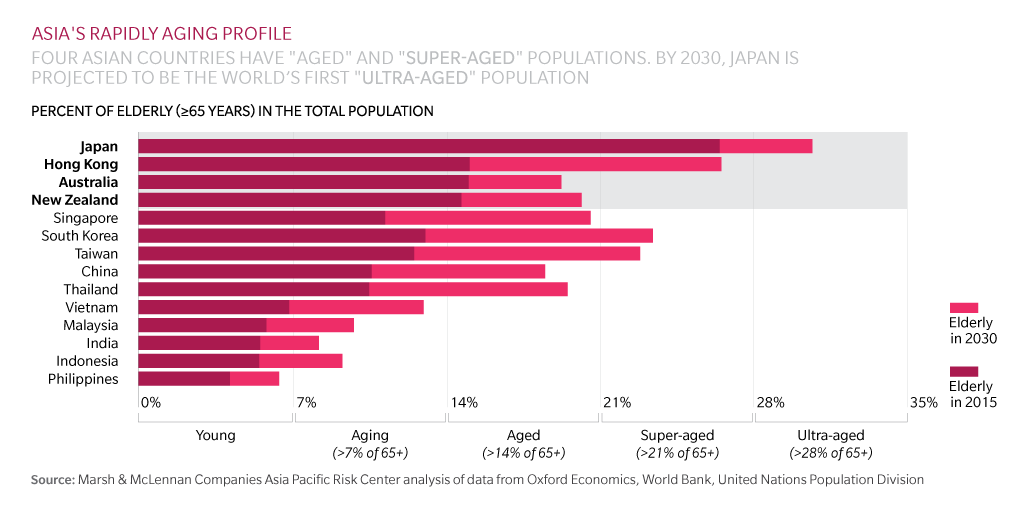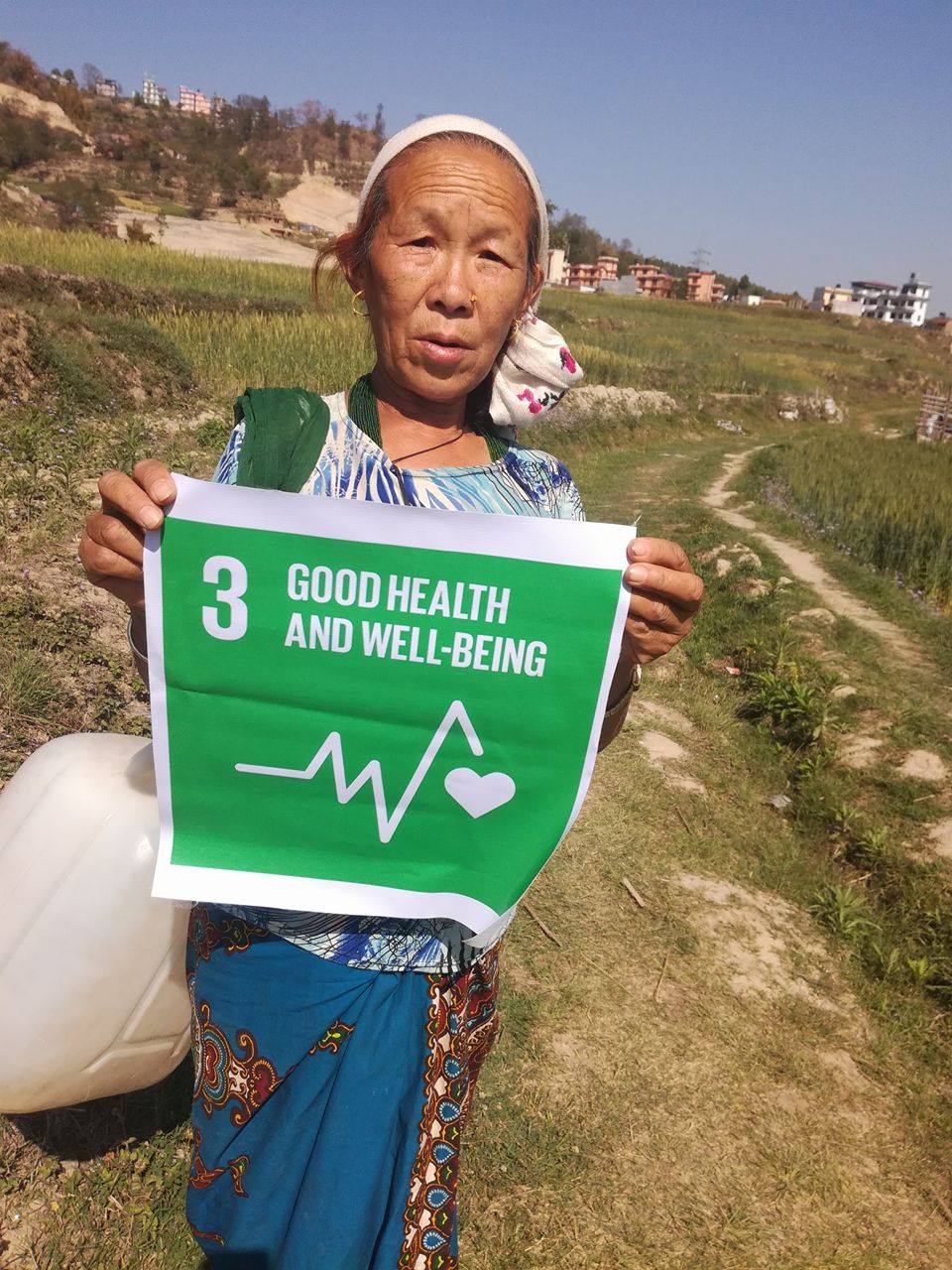On the International Day of Older Persons 2017, let us work to fulfill its theme of "Stepping into the future: Tapping the talents, contributions and participation of older persons in society"
When floods devastated large swaths of Myanmar in 2015, Aye Than and her family fled their home for a makeshift roadside shelter. She became the caregiver for her 86-year-old father and her two young grandchildren. Her pregnant daughter earned a meagre income through casual labour, while her son-in-law left to search for employment as a migrant worker. Aye is just one of the 4.5 million people in Myanmar over the age of 60, many of whom lack income and social support networks.
In the Philippines, 75-year-old Ligaya Bahillo saved part of her small income from laundry jobs to buy medicine for her hypertension. To her shock, the drugstore wouldn’t give her the significant senior citizens’ discount because she didn’t have an official ID to prove her age. But without ever having a birth certificate, she was unable to apply for the document. Ligaya’s story illustrates the gap in many countries between social security systems meant to benefit the elderly and the realities that often prevent those systems from being properly implemented.
"Leaving no one behind": Addressing population ageing through the prism of the SDGs and rights
These are just a couple of the many socio-economic challenges older people face in Asia and the Pacific, currently home to over half the world’s people over 60 years of age. Globally, the number of older persons, rising at an unprecedented rate, is forecast to exceed 2 billion by 2050. By then, nearly two-thirds of the world’s older people – close to 1.3 billion – will be living in Asia-Pacific, and one in four people across the region is expected to be over 60. In north-east and East Asia, this proportion will be more than one in three people.
Women currently constitute the majority – some 54% – of the older demographic in Asia-Pacific, but represent an even greater majority, 61%, of the “oldest old” population (80 years and older).

On one hand, increasing longevity is a genuine cause for celebration, a triumph of social, economic and technological development for a region that in the not too distant past presented a very different picture of life expectancy. But the rapid pace of ageing has profound socio-economic, cultural and political implications, which governments and civil society must come together to address in countries across the spectrum – from upper-income countries such as Japan and the Republic of Korea through middle-income countries including China and Thailand, to lower-income countries such as Nepal.
This is all the more crucial within the context of the 2030 Sustainable Development Agenda underpinned by its 17 Sustainable Development Goals, whose central pledge is to ensure that “no one is left behind”.

Image: Ageing Nepal
It is creditable that more than 20 countries in Asia-Pacific have adopted national policies or established special bodies on ageing, but many others have yet to do so. And even where policies do exist, implementation must be strengthened to ensure some of our most vulnerable and marginalized fellow humans can fully benefit from them. With insecure incomes, a lack of assets and insufficient social protection, far too many senior citizens in Asia-Pacific are struggling to get by, and many fall into extreme poverty. Barely a third receive some form of pension, and where such pensions do exist they are often insufficient to support a reasonable quality of life. Older women, as exemplified by the struggles of Aye and Ligaya, are more vulnerable to poverty, which is exacerbated by factors linked to gender equality and equity.
Asia-Pacific has a long tradition of family and community support for older people, but that too is rapidly changing as lower fertility, mass migration, development and globalization change family structures and long-held values.
As older people are increasingly left to fend for themselves, current government healthcare and other protection systems – if they do exist – are stretched too thin to meet their needs. Further, the vast majority of countries lack age-friendly environments including housing and infrastructure. Governments are grappling with a shrinking labour force, escalating healthcare expenditure and pension costs within a volatile economic landscape. To maintain economic growth and keep living standards rising, policies and institutions must be reformed – there is little time to lose.
A different mindset, a different narrative
All of this requires a different political and socio-cultural mindset, one that sees the opportunities arising from an ageing population and works to turn these challenges on their head.
Asia-Pacific countries could actually reap a “longevity dividend” if older people were enabled to work for longer, but in ways appropriate to their age. Age-friendly employment policies, flexible retirement and investment in human capital, infrastructure and public services could help make this happen, alongside doing away with laws that discriminate on the basis of age. We must carve out a new narrative about the role of older persons - one that acknowledges, facilitates and celebrates their potential to contribute to societies and economies. We must aspire to the theme of the 2017 International Day of Older Persons, "Tapping the talents, contributions and participation of older persons in society."
A growing number of countries have already started exploring various options.
In 2002, 159 governments along with civil society organizations and representatives came together to produce the Madrid International Plan of Action on Ageing (MIPAA) – the first-ever global agreement to recognize older people as contributors to the development of their societies. Countries pledged to incorporate ageing into all social and economic development policies, including poverty-reduction programmes, as a key factor in reaching the 2015 Millennium Development Goals. This commitment was reiterated within the Ministerial Declaration on Population and Development at the Sixth Asian and Pacific Population Conference in Bangkok four years ago.
This year, the international community has convened for the third MIPAA review – the first to be conducted in the SDGs era – and the Asia-Pacific scorecard will be key. Our region has the potential to be a leader in ensuring the well-being of older citizens and, in turn, strengthening societies to help ensure absolutely no one is left behind.
A version of this UNFPA Asia-Pacific editorial was published previously by the World Economic Forum
Image: UNFPA Myanmar
Related resources:
Live Long and Prosper? Aging in Asia and the Pacific (World Bank, 2015): http://bit.ly/1ROvyEG
World Population Ageing Highlights (UN DESA, 2015): http://bit.ly/1S95LIX
Madrid International Plan of Action on Ageing (MIPAA): http://bit.ly/2x41d2Q
For more information, contact Roy Wadia/UNFPA Asia-Pacific: wadia@unfpa.org

